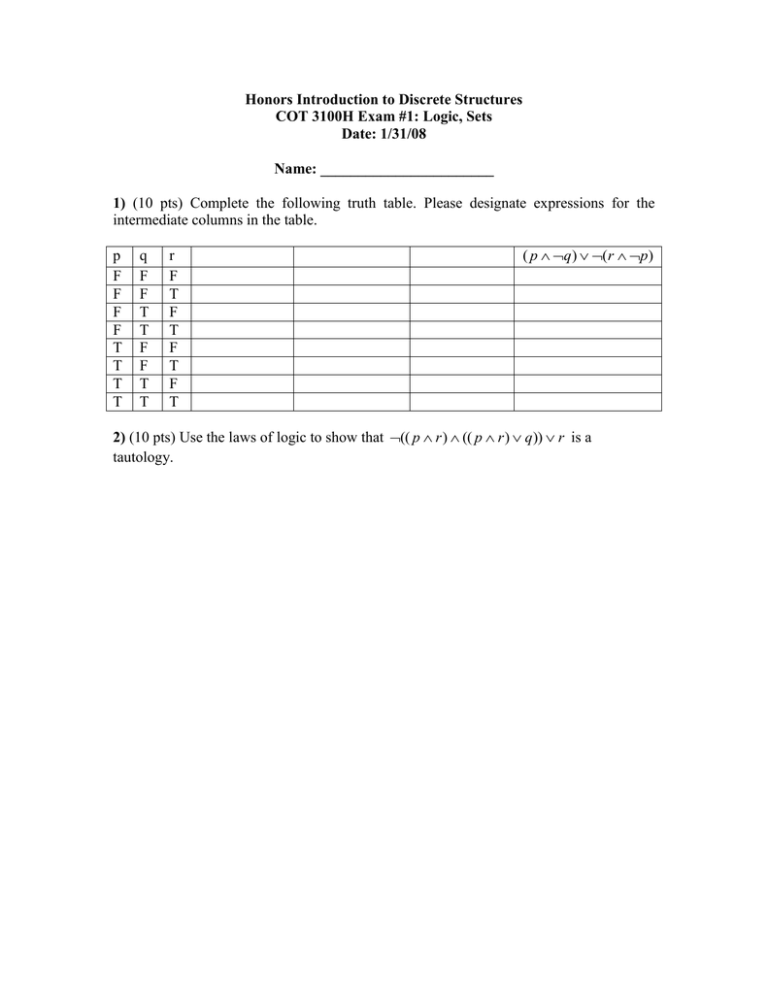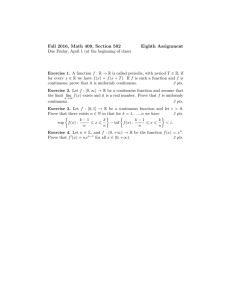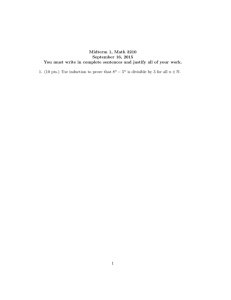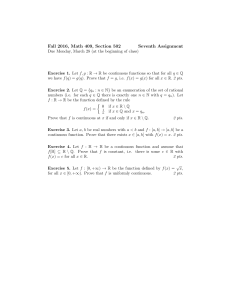Honors Introduction to Discrete Structures COT 3100H Exam #1: Logic, Sets
advertisement

Honors Introduction to Discrete Structures COT 3100H Exam #1: Logic, Sets Date: 1/31/08 Name: _______________________ 1) (10 pts) Complete the following truth table. Please designate expressions for the intermediate columns in the table. p F F F F T T T T q F F T T F F T T r F T F T F T F T ( p q ) (r p ) 2) (10 pts) Use the laws of logic to show that (( p r ) (( p r ) q)) r is a tautology. 3) (10 pts) Use the rules of implication to prove the following argument: p (q r ) ps t q s ---------------- r t 4) (10 pts) Give examples of statements p, q, r, s and t for the question above that would exemplify a typical argument/proof that someone would make in real life. (Note: I get to judge if the example is typical enough!) p = _____________________________________________________________ q = _____________________________________________________________ r = _____________________________________________________________ s = _____________________________________________________________ t = _____________________________________________________________ 5) (10 pts) Let x and y be chosen from the set of integers for the purposes of both parts of this question. Determine, with justification, whether or not the two following statements are true: (a) xy[ y | x] , (b) xy[ y | x] . (Note: y | x iff there exists an integer c such that x = yc.) 6) (10 pts) Prove or disprove: if A C B C , then A B . 7) (10 pts) Prove or disprove: if A B C , then A (( B C )) A B C . To prove the claim, write out a set membership table and then argue why the entries on the table prove the claim. 8) (15 pts) Prove the following claim using direct proof by cases: if A B and B A , then Power ( A) Power ( B) Power ( A B) . 9) (10pts) There is a simple trick that works to square numbers that end in 5. It works as follows: a) Take the number, getting rid of the 5 at the end, call this new value x. b) Calculate x times x+1. c) Your final answer will be what you calculated in part b, with 25 at the end. For example, to calculate 1152, get rid of the 5 to obtain 11. Then multiply 11x12 to get 132. Thus, the final product is 13225. As a second example, 652 = 4225, since 6x7 = 42. Prove that this trick works by algebraically examining the square of numbers that leave a remainder of 5 when divided by 10. Please use words to explain your results and link the algebra to the English description above. 10) (5 pts) On Sunday, Tom Brady will compete to win his fourth Super Bowl. How many Super Bowls has he already won? ____________ Scratch Page – Please clearly mark any work you would like graded on this page.





